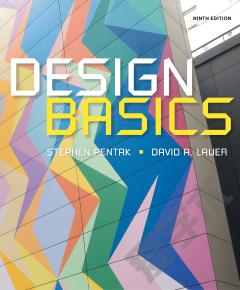The Principles of Design
Chapter II. Shape Rhythm. Examples; application to a border; simplicity; development of shape rhythm over a surface. Shape balance; where found; its application to line arrangements; black and white in line work. Shape harmony; examples; how to secure; its presence desirable. Chapter III. Measure Balance. Its importance; elementary application to areas; as found in various productions. Ah stract spots and their arrangement into units; balancing of same. Chapter IV. Shape Rhythm Areas. Examples of early work and comments on same; relation to our problems. Spot arrange ments and underlying principles; angles of repetition. Chapter V. — Tone Balance — Black and White. Conclusion of line rhythm; lines in work of past. Distribution of two tones; balance secured; application of principle to various problems. The page of the printed book; margins.
{{comment.content}}








 京公网安备 11010802027623号
京公网安备 11010802027623号